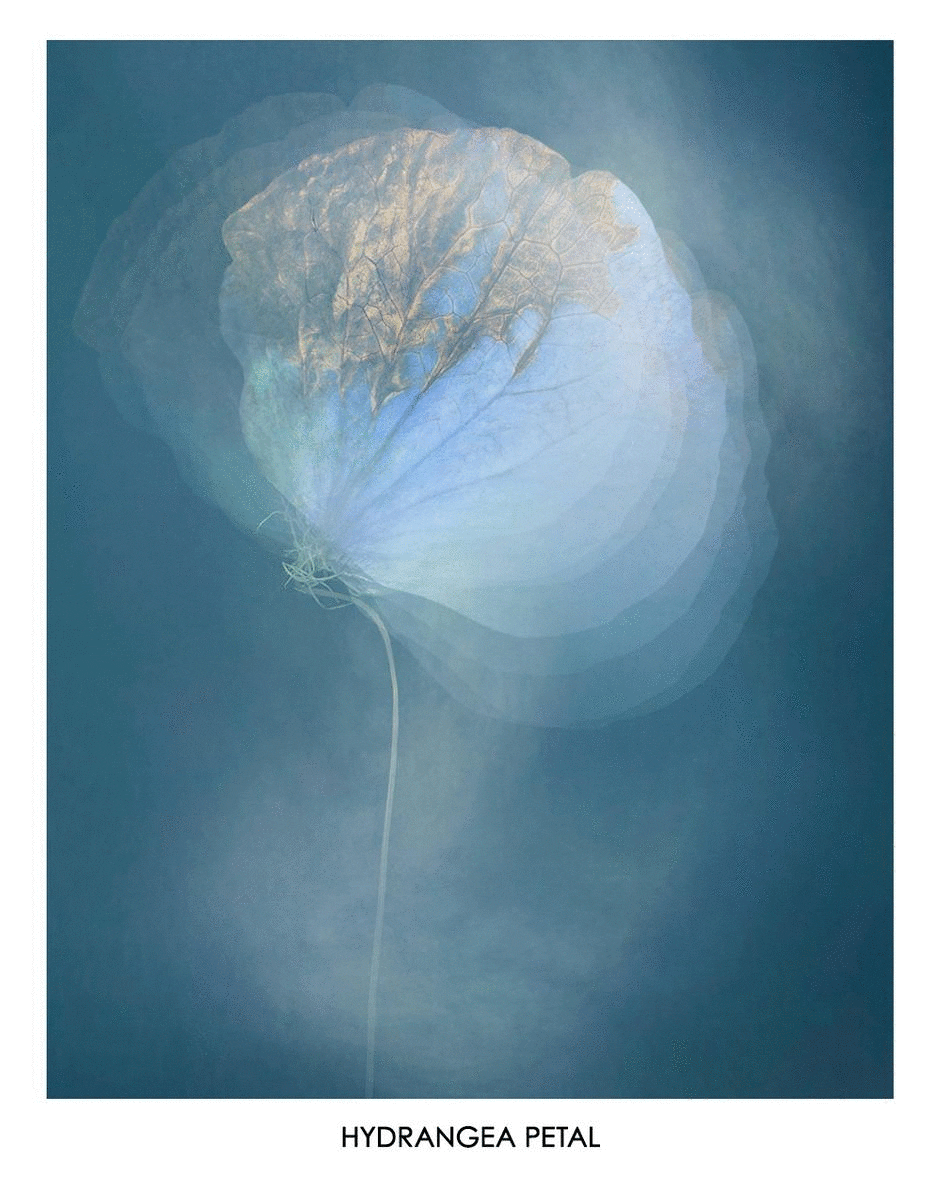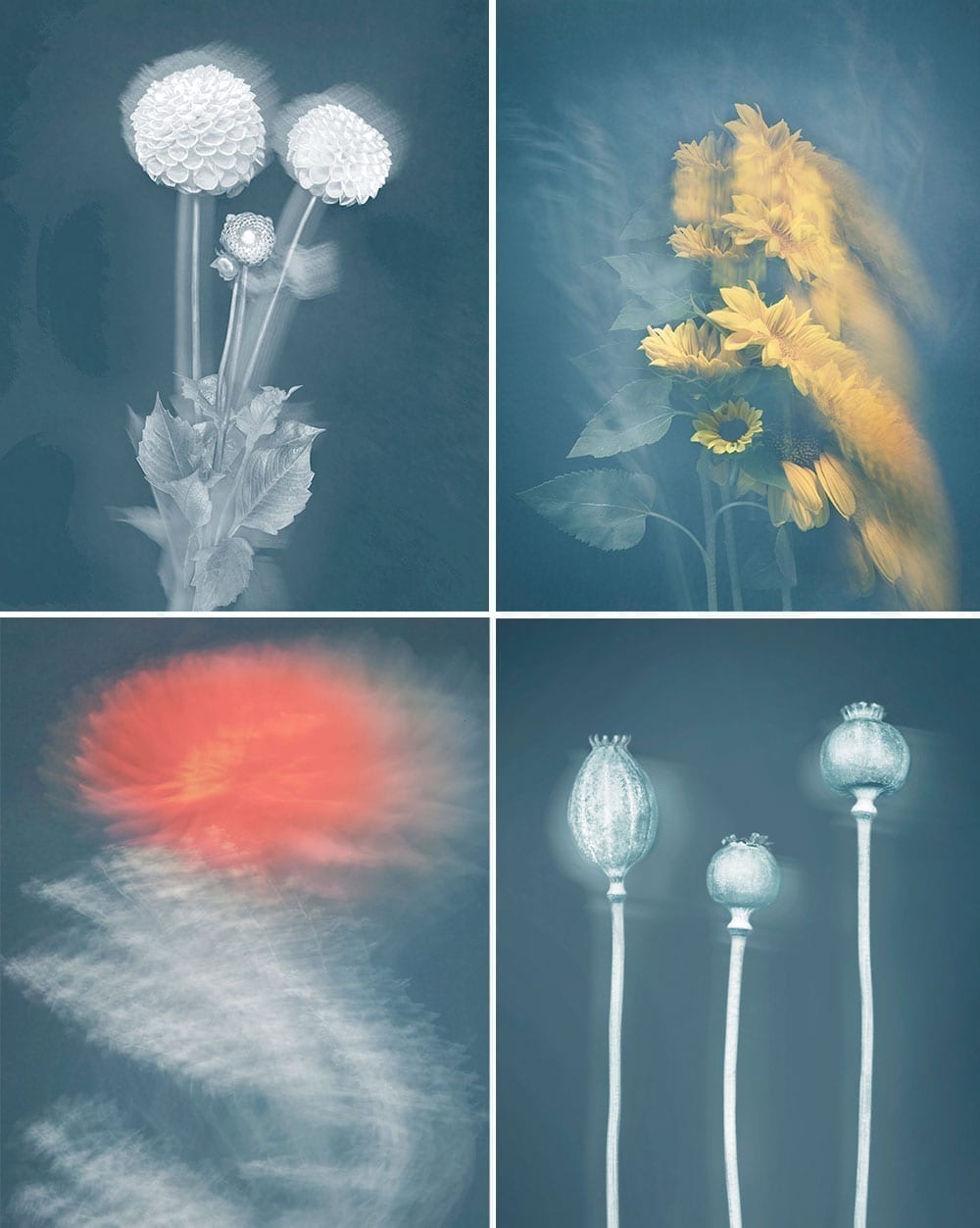

Radiant Beings
Joyce Tenneson has spent the better part of her career looking inward – trying to peel back the surface veneer of an individual or object and look for its essence. Photography’s strength, as well as its limitation, is that it provides the viewer with a precise visual of what is in front of the camera lens. It is a visual likeness shown in two dimensions. What preoccupies many significant photographers are more complex issues. What does something feel like? What is behind the immediate surface? When what is photographed has changed – how does it change? What is the complex relationship between photography and memory? And in what way can a photograph have a deeper meaning? In more general terms – how can a photographer expand the significance of what they see beyond the static image?
Photography as a learning tool
If these questions weren’t asked by artists who work with the tools of photography, we would be looking only at two-dimensional images as mere visual records. Fortunately, photography is a much richer media, and photographers like Joyce Tenneson are interested in the possibilities of how images can connect us in a more complex way to our natural world. The photograph is not an endpoint but rather the start of a journey that should engage us on a deeper and more profound level. What is our relationship to the larger world, and how does a photograph engage with more extensive issues?

A Return to Flora
Ever since photography’s inception, the Earth’s flora has been a source of inspiration as well as fascination. They have a life, are a miraculous part of nature, are found in almost infinite varieties, and are valued by every culture throughout history. They can also be stunningly beautiful. All this is well and good, but the caveat is how do we not get seduced by their physical glory and use them to open up into a larger world?
Joyce Tenneson’s new series,” Radiant Beings,” is her return, during the lockdown resulting from quarantine, to the world of plants and flowers. This time, her approach to this subject is decidedly different than her past work on nature. Her new photographs are brought to life against a deep blue background. The color blue becomes, for Tenneson, a symbol of harmony and peace, encompassing the hues of the sky and the oceans. It also is a healing color that restores us in difficult times. Many of her new pictures are monochromatic, with the flowers being converted to a diaphanous white. They appear almost as x-rays, in which we look behind their fragile exteriors. The flowers and flora become elemental forms that are often blurred by movement, as Tenneson manipulates them while the lens is open. Rather than photographing with a tight, sharp focus, she intentionally blurs the picture. She has also used a very narrow depth of field that causes the backgrounds to appear soft and billowy. Her interest is in flowers or pods as animated forms. She often layers them and lets them cascade unpredictably. There is a range, in this series, between the tight and loose organization of the elements. Many photographs feel improvisational, and if she uses color, it is one or two colors – used for effect. Often the brighter colors blur, and the flowers become partially abstract.
A Sense of Serenity and Reflection
As a body of work, these photographs ask us to see them as life forms. They seem to blow in an imaginary wind and draw us into a deeper space where our focus is not drawn to a flower, a pod, or a bud but into the serene blue atmosphere, constant in all the pictures. The flowers are given an impressionistic treatment. They provide us with something to celebrate and admire. They, collectively, create a complex garden that can be a metaphor for emotions and feelings. The making of these pictures can be interpreted as visual poems that Tenneson creates, compositions of great richness. They encourage us to transcend the static image and imagine a profound ambiance. When I reflect on them, I am reminded of a Sonnet by Elizabeth Barrett Browning, who uses words to connect the world of nature and cut flowers as a way of looking inward:
“Beloved, thou hast brought me many flowers
Plucked in the garden, all the summer through
And winter, and it seemed as if they grew
In this close room, nor missed the sun and showers.
So, in the like name of that love of ours,
Take back these thoughts which here unfolded too,
And which on warm and cold days I withdrew
From my heart’s ground. Indeed, those beds and bowers
Be overgrown with bitter weeds and rue,
And wait thy weeding; yet here’s eglantine,
Here’s ivy!—take them, as I used to do
Thy flowers, and keep them where they shall not pine.
Instruct thine eyes to keep their colors true,
And tell thy soul their roots are left in mine.” – Sonnet 44

